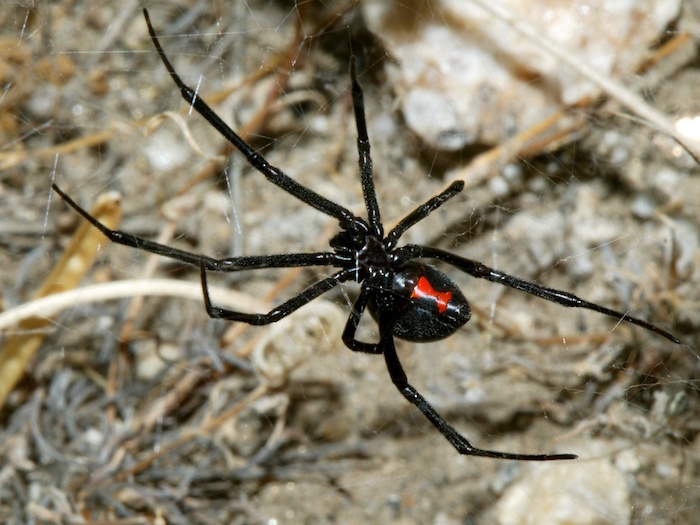
While the black widow spider is considered by many to be one of the most venomous spiders in North America, thankfully their bite if rarely fatal to humans. However, black widows are still highly venomous and very common in California. The western black widow, or Latrodectus Hesperus, is particularly common in the Western and Southern states of the United States.
Considered to be 15 times more venomous than rattlesnake venom, it is mostly good luck that so few people are bitten every year by them. Thankfully, black widows do not seek out humans or pets and are only prompted to bite when disturbed. Yet this is how people and animals are most often bit by black widows, especially as the spiders are so common in Sacramento garages, basements, porches, barns, tree stumps, bushes, and sheds.
Black widow females lay papery egg sacs that contain anywhere from 200 to 900 eggs that hatch in approximately 30 days. In mating, females practice sexual cannibalism and eat their male mates shortly following mating, and their babies are no different, often eating one another to the point that very few survive the three-month period of development into adulthood.
Those that do develop into adulthood are highly poisonous, though only the females are any real threat in terms of their bites penetrating skin. Thankfully, bites are only truly a risk to the sickly or very old or very young. Bites often spread pain throughout the body in a matter of minutes, accompanied with muscle pains, hypertension, difficulty in breathing, nausea, severe abdominal and back pain, and profuse sweating. Symptoms may last for several days. Those bitten may want to consider getting the antivenom to lessen symptoms and damage.
